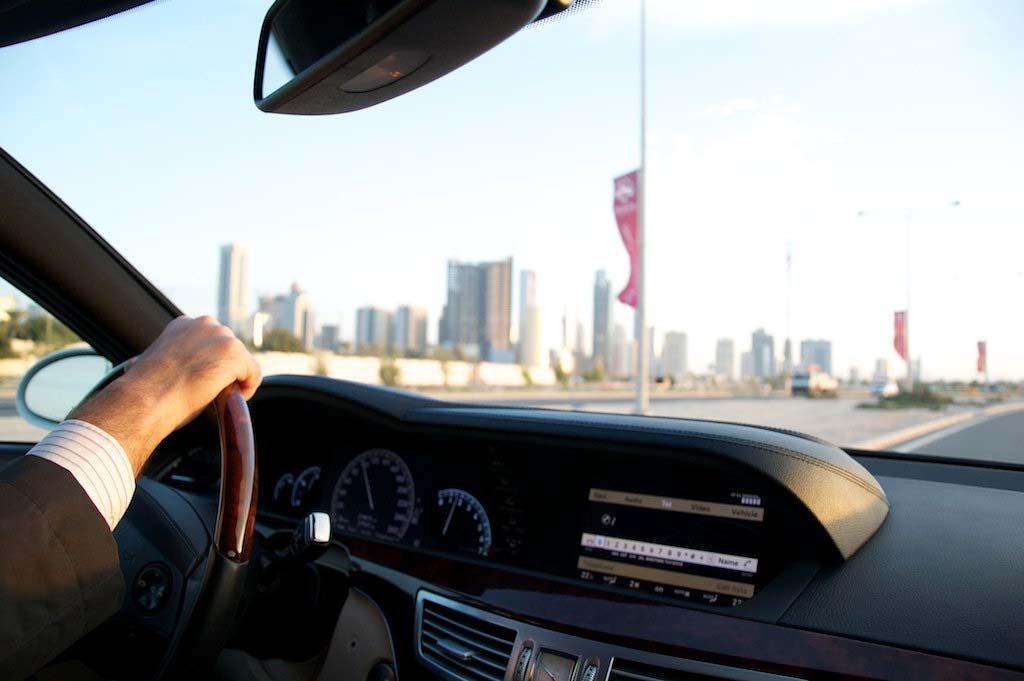
Speeding continues to be one of the most easily preventable safety risks on Qatar’s roads and can only be addressed with stricter enforcement, a traffic expert said in Doha this week.
Speaking to Doha News after a panel discussion on traffic safety at the World Innovation Summit for Health, Adnan Hyder, a professor at the Johns Hopkins Bloomberg School of Public Health, said:
“Speed is a very big factor here, (and) there is nothing to curtail speed except enforcement.”
Qatar’s general population appears to agree. Greater police presence and more stringent enforcement of traffic laws topped the responses to a survey of residents conducted late last year on how the government can best address Qatar’s traffic woes.
It is unclear why Qatar’s police force does not pull over more reckless drivers, but lack of training may be a factor. To tackle this problem, the Ministry of Interior last month announced that a newly trained highway patrol force would be hitting the country’s roads in the new year.
The officers received a special month-long training course that included traffic crash investigation techniques, advice on how to deal with the public, driver interviewing skills, vehicle inspection and Qatari traffic law awareness.
Awareness
Residents have also suggested that more needs to be done to teach motorists the basics of traffic awareness and driving culture.
Hyder agreed that raising awareness through marketing campaigns, for example, is important. But he added that formally educating young drivers isn’t an effective strategy.
That was one finding Hyder spoke about during his session at WISH, in discussing four controlled studies on the impact of road safety lessons on 14- and 15-year-olds. The additional education failed to have a positive impact on any of the groups. Three actually increased their risk-taking behavior because they became overconfident, Hyder said.
“There is the potential for harm rather than good,” he said.
What’s more effective is a graduated licensing system, under which new motorists are incrementally given additional driving privileges. They may, for example, start off by only being allowed to drive if accompanied by an experienced motorist and during daylight hours. After gaining experience behind the wheel, the new driver can then take a test and drive solo.
The minimum age for learning to drive in Qatar is 18, although special permission can be granted for learners as young as 17 years old.
Sobering statistics
Official statistics show a shrinking proportion of Qatar’s population is dying on the country’s roads.
A senior official with Qatar’s Ministry of Interior attending the WISH road traffic safety session said the number of traffic fatalities has gone down from 24 per 100,000 people five years ago, to nine per 100,000 in 2012.
That’s consistent with the observations of Hyder, who specializes in studying the impact of injuries and violence in the developing world.
“It’s tremendously encouraging that the road safety situation seems to be improving,” he said following Tuesday’s panel discussion.
While the rate of deaths and injuries may be declining, Qatar’s surging population means that horrific crashes continue to be a regular occurrence in and around Doha.
In absolute terms, the number of accidents resulting in injury climbed nearly 12 percent last year. The number of severe injuries increased some 3.2 percent, while the number of people killed decreased from 205 in 2011 to 204 last year.
Observers have pointed to increasing levels of vehicle ownership, a road network that’s unable to keep up with their presence, a population with a wide range of driving skills and the reckless behavior of a dangerous minority as key issues behind Qatar’s traffic woes.
How do you think things can be improved? Thoughts?







